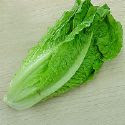


Lolorosso Romaine Radicho

 local word for "vintage" to the label: "Cosecha" in Spain, "Vendemmia" in Italian. (Most national wine laws require that at least 85 percent of the wine be harvested in the year of vintage; up to 15 percent may be blended in from other years.)
local word for "vintage" to the label: "Cosecha" in Spain, "Vendemmia" in Italian. (Most national wine laws require that at least 85 percent of the wine be harvested in the year of vintage; up to 15 percent may be blended in from other years.) Austria, some wines use special terminology to reflect the ripeness of the grapes and the quality of the finished wine. The German wine pictured, for instance, is a "Kabinett," the lowest ripeness level in "Qualitätswein mit Prädikat," the highest quality level. For more information on the German system, read John Trombley's excellent article, Knowing the German Quality System for Wines. Some German wine labels will also show "Trocken" ("Dry") or "Halbtrocken" ("Half Dry") to denote wines vinified to less natural sweetness.
Austria, some wines use special terminology to reflect the ripeness of the grapes and the quality of the finished wine. The German wine pictured, for instance, is a "Kabinett," the lowest ripeness level in "Qualitätswein mit Prädikat," the highest quality level. For more information on the German system, read John Trombley's excellent article, Knowing the German Quality System for Wines. Some German wine labels will also show "Trocken" ("Dry") or "Halbtrocken" ("Half Dry") to denote wines vinified to less natural sweetness. labels also carry small print disclosing the wine's approximate alcoholic content and the size of the bottle, as highlighted on several of the labels photos. Imported wines in the U.S. normally bear the name and other information about the company that imported the wine.
labels also carry small print disclosing the wine's approximate alcoholic content and the size of the bottle, as highlighted on several of the labels photos. Imported wines in the U.S. normally bear the name and other information about the company that imported the wine.